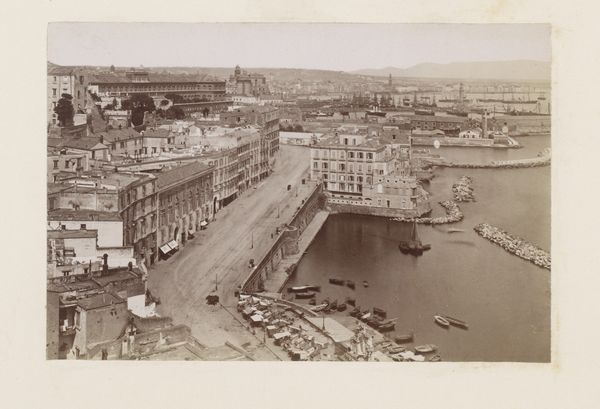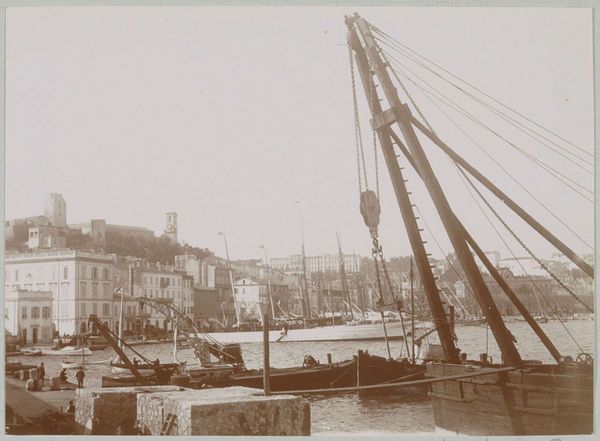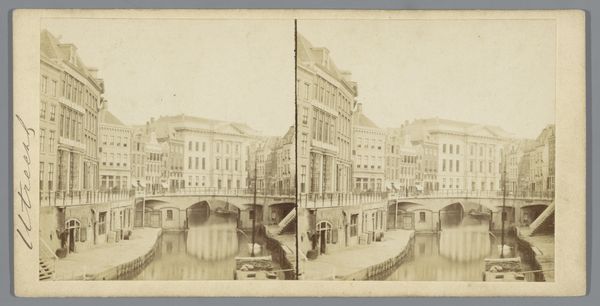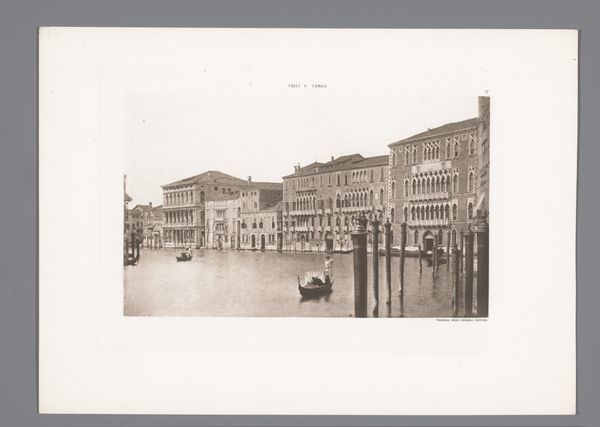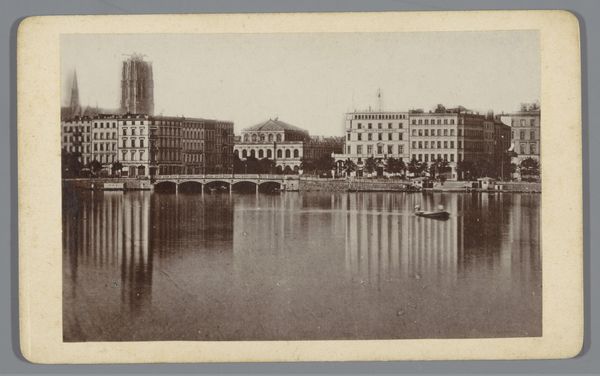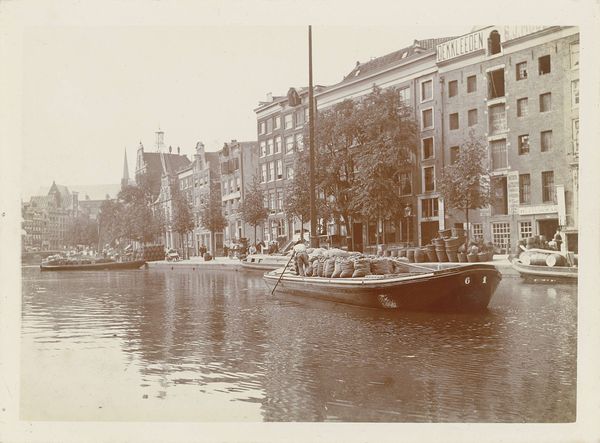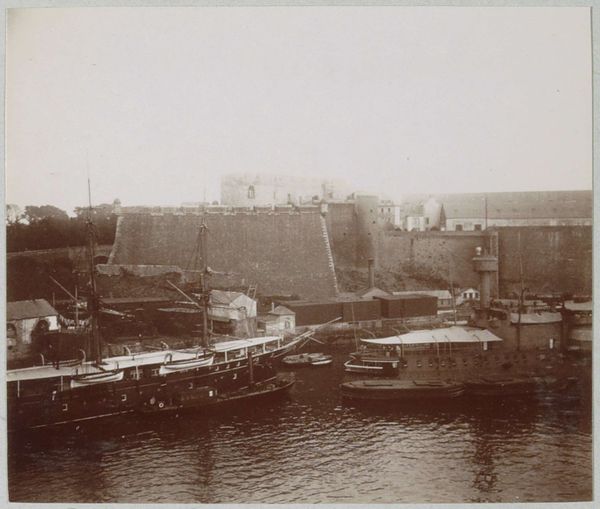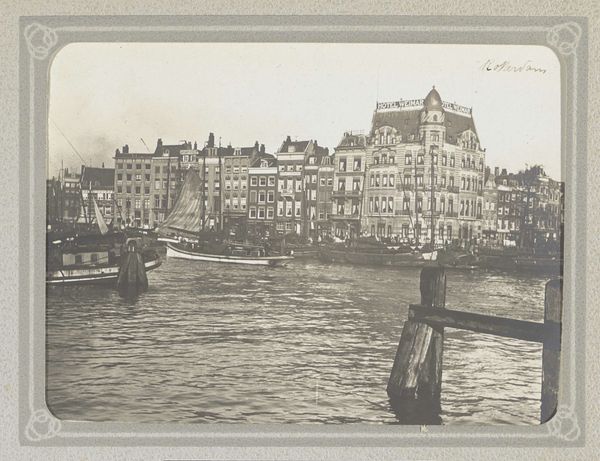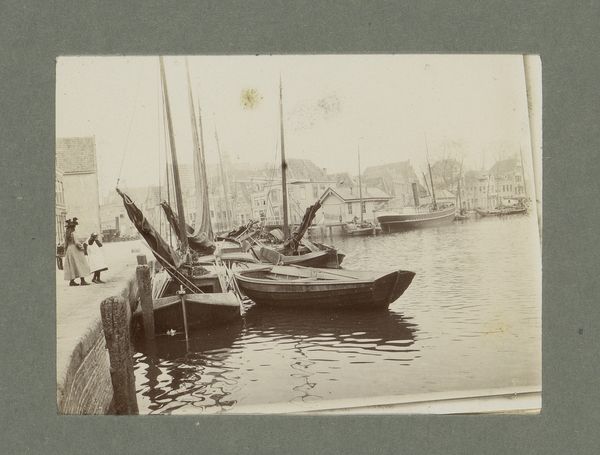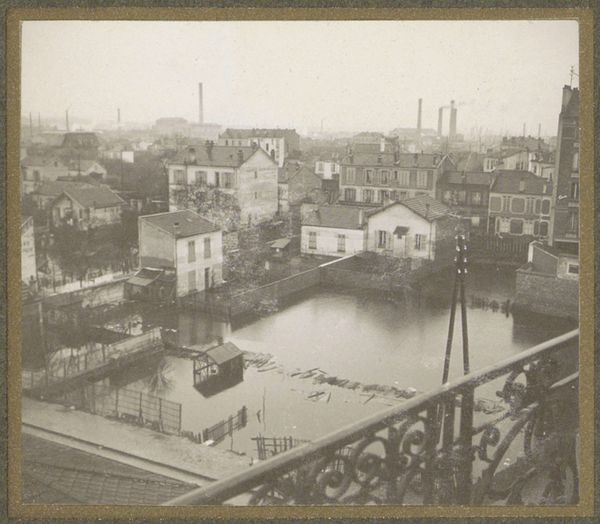
Gezicht op de kade van de Via Caracciolo te Napels en vissersboot in de baai, Italië 1857 - 1900
0:00
0:00
Dimensions: height 317 mm, width 445 mm
Copyright: Rijks Museum: Open Domain
Curator: Here we have a fascinating gelatin-silver print by Giorgio Sommer, titled “View of the quay of Via Caracciolo in Naples and fishing boat in the bay, Italy," created sometime between 1857 and 1900. Editor: It has a beautiful melancholic air. Looking at this faded palette, the image almost whispers of a bygone era—a bit dreamlike. The way the light falls makes me think of half-forgotten seaside vacations. Curator: Precisely! The romantic landscape invites introspection. Notice how the fisherman interacts with the boat: it symbolizes man’s harmonious coexistence with nature. There is a stillness in the air. Even the buildings are static, rooted firmly in time. Editor: Harmonious? Perhaps. Or maybe they're battling. Those heavy, monumental buildings—their rigid geometry feels indifferent, almost dismissive, of the tiny boat bobbing in the bay. Do you think there's perhaps a critique here, veiled in this romantic guise, about humanity’s place within the grand, indifferent scope of modern life? Curator: That tension definitely exists. It raises questions about the cultural memory encoded into such places. Naples, here, functions as a stage for enduring symbols – the sea representing adventure, the street for commerce, and the city itself holding millennia of memories. It’s not just a picturesque scene; it is a coded visual text. Editor: True, that tension. Thinking about that memory, and that melancholy again, it does carry a weight of historical experience, doesn’t it? It feels like you can smell the brine and the sun-baked stones. As if those buildings witnessed endless sunsets over centuries… which of course they have. Curator: Sommer truly captures an enduring spirit, linking modern existence with echoes of classical times. Editor: Exactly, a scene painted with both grit and grandeur, prompting you to look deeper beyond its simple appearance.
Comments
No comments
Be the first to comment and join the conversation on the ultimate creative platform.
